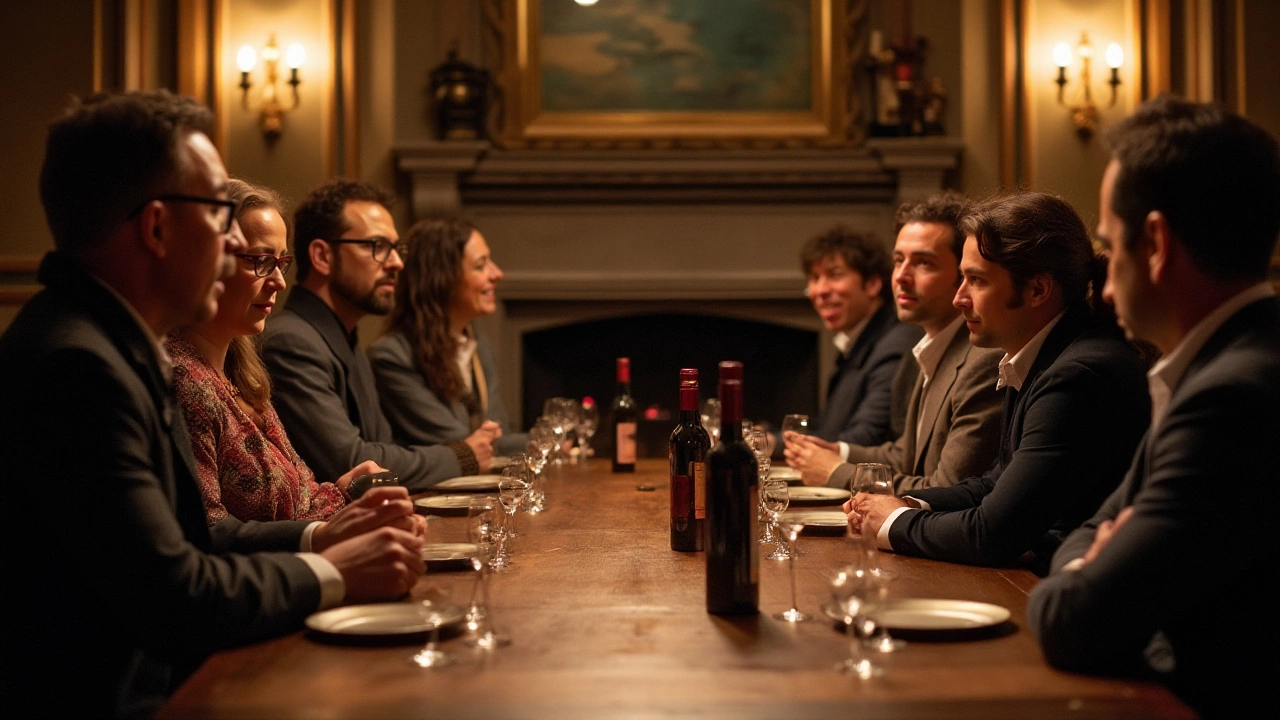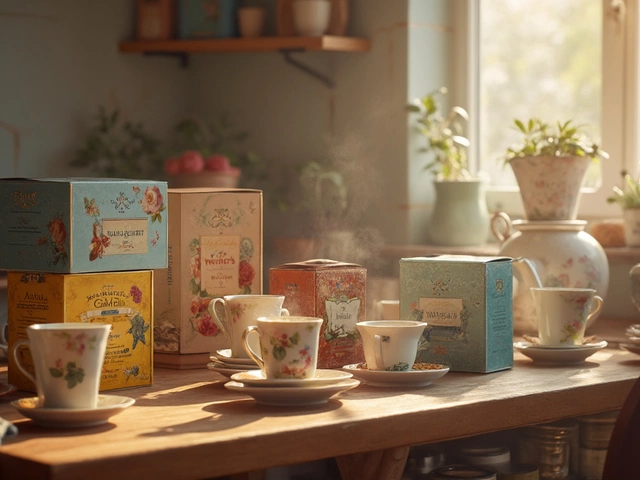When you're at a wine tasting event, the scene is pretty much picture-perfect: glasses with sparkling contents, the murmur of lively conversations, and the occasional clink of glasses meeting. But between all these niceties lies a practical question that often stumps participants — should you spit out the wine?
The art of wine tasting comes with its own unique set of traditions, one being the option to spit. It’s not just for shock value or to seem like a wine-tasting aficionado. There are practical reasons that lead many to adopt this practice, ranging from sensible sobriety to more nuanced flavor exploration.
Understanding the basic etiquette and purpose behind this centuries-old tradition can enhance your tasting experience. Whether you're new to the tasting scene or simply looking to refine your approach, this article will delve into the various aspects of this intriguing practice. So, let's dive into the reasoning, the manners, and the methods of spitting wine.
The Purpose of Spitting
When it comes to the practice of spitting wine during a tasting, it’s all about balance and maximizing the experience without overwhelming the senses. Wine tastings can encompass a wide range of samples, sometimes dozens in a single session. For both wine enthusiasts and professionals, maintaining a clear head is crucial to evaluating each wine's distinctive qualities. Spitting allows tasters to stay sharp while still indulging in the pleasure of discovering unique flavors and aromas.
Spitting isn’t about diminishing the experience, rather it serves as a way to extend it. When you're committed to savoring numerous wines, swallowing every sip can quickly dampen the ability to distinguish subtle notes. The palate requires a level of acuity to detect those delicate inflections within a wine's profile. Spitting enables one to appreciate each sample on its own merits without blurring the lines between them. This practice is especially important for those who aim to provide accurate tasting notes or recommendations.
According to a well-known wine critic, "The art of wine tasting is not just about what you taste, but how you manage the tasting process." Without the option to spit, even well-seasoned experts could find themselves impaired, potentially compromising their capabilities to discern the character of each wine variety. For professionals in the industry, especially those judging in competitions or auctions, spitting is a respected and necessary skill. It is a way to maintain professionalism and precision throughout prolonged tasting sessions.
Consider the historical aspect of this practice. Wine tasting has long been a part of cultural and social gatherings, where the focus was on the sharing of both wine and conversation. Spitting allowed for sustained engagement in these activities, without the adverse effects of overconsumption. Today, many wineries and tasting rooms provide spittoons for guests, acknowledging and encouraging the practice as part of wine-tasting etiquette.
For newcomers to wine tasting, the concept of spitting may seem awkward, but it becomes natural with understanding and practice. It’s essential to approach the experience with an open mind and recognize that it contributes significantly to what the French call 'terroir'—the complete natural environment where a particular wine is produced, including factors such as soil, topography, and climate. By preserving the ability to savor each wine thoughtfully, spitting helps deepen one's appreciation of this sophisticated art.

Staying Sharp and Sober
In the realm of wine tasting, remaining sharp and aware of the nuances in each sip is crucial. It's not just about the enjoyment of flavors — understanding them requires a clear mind. For those attending a tasting, it's often more about comparing wines than simply consuming them. The option to spit allows tasters to try a broad spectrum of wines without becoming inebriated. When you choose to spit, you're effectively protecting your palate against the numbing effects of alcohol, which can dull your ability to discern those finer details that experts often wax poetic about.
Consider the tasting events where dozens of wine varieties await. Consuming each sip could easily lead to a fuzzy head rather than a refined taste. Professional tasters—including sommeliers and wine critics—often need to maintain a level of sobriety to evaluate each sample effectively. A blurring line of tipsiness not only affects judgment but also diminishes the sensory experience, leading to inaccurate reviews or personal assessments of the varieties available. In many cases, the delicate taste of a vintage Chardonnay or the robust aroma of a full-bodied Cabernet Sauvignon could slide into obscurity, replaced by a generalized sense of warmth from the alcohol itself.
Renowned wine critic Robert M. Parker Jr. has often remarked on the importance of maintaining one’s faculties while critiquing wine. As he puts it, "The art of tasting is lost when one is too deep in their cups," an assertion supported by the meticulous approach he and many others take during tastings. To balance enjoyment and professional assessment, spitting becomes an essential tool.
The physiological aspect can't be ignored either. Once the alcohol begins to affect cognitive functions, the senses that detect all those delightful flavors and aromas stop working to their full potential. While many might argue that wine should be enjoyed with a certain level of intoxication to appreciate its more hedonistic pleasures, there's a distinct divide when it comes to professional tastings.
During these events, tasters often also discuss and write observations. Keeping a clear head isn't just about tasting more wines; it's also about being able to articulate thoughts and share experienced nuances accurately. Especially for novice tasters looking to hone their skills, learning the balance between indulgence and analysis can transform their appreciation and understanding of wines. In an environment where clarity of thought is essential, spitting becomes more than just socially acceptable—it's often recommended.

Etiquette of Spitting
Mastering the etiquette of spitting in the context of wine tasting isn't just about technique, but also about appreciating the age-old traditions that accompany this refined art. If you're stepping into this world for the first time, it might feel a bit awkward, but understanding its cultural context helps. Spitting is not a lack of respect for the wine or the winemaker; rather, it's a valuable method to pace yourself, especially when sampling a long series of varieties. It's as much a part of the process as swirling and sniffing, aimed to help you savor every nuance embedded in those precious sips throughout your tasting journey.
When attending a tasting, it's crucial to approach the spittoon with a sense of decorum. First and foremost, be discreet. Wine hosts appreciate discretion, and so do fellow tasters who might not be spitting themselves. Always stand directly over the spittoon, avoiding any dramatic gestures. The goal is to smoothly and quietly remove the liquid without drawing unnecessary attention to the action. Many experienced tasters suggest mastering a subtle technique that ensures splash-free execution. "In a realm where finesse matters, it's all about the grace of each gesture," says renowned sommelier Madeline Puckette in her tasteful reflections.
Beyond technique, there's an unspoken code of etiquette regarding capacity. Employers and hosts will often provide an ideal amount for tasting so that you don't feel compelled to shout out your preference to either swallow or spit. However, when faced with a wine that's particularly special to you, don't hesitate to appreciate its full-bodied experience—taste buds, smell, and all—by choosing to savor it instead. In many ways, this selective act pays homage to the effort bestowed by vintners on their craft.
The practicalities of spitting aren’t the only thing to consider; cleanliness is essential in communal settings. After finishing, ensure to discard any tissue or debris promptly, maintaining the tidy atmosphere these elegant spaces command. Many hosts go out of their way to create an environment that fosters a serene experience, void of unnecessary clutter. Look for waste bins usually placed nearby, for any extra refuse from the tasting ritual.
Respecting Others Around You
It's also worth mentioning how timing plays a role in being courteous. Spit in harmony with those around you, rather than disrupting a host while they explain delectable wine features or someone else sharing insightful observations. This awareness not only showcases your grasp of etiquette but also contributes positively to the ambiance of the tasting room. Make it a point to minimize disruption, so everyone, including yourself, can appreciate the complete spectrum of flavors unhampered. These little acts sincerely elevate your status among fellow tasters and hosts alike, demonstrating your profound respect for the session's spirit.
| Year | Percentage of Tasters Who Spit |
|---|---|
| 2020 | 45% |
| 2023 | 52% |
By understanding the nuanced practice of spitting during wine tastings, you align yourself with both tradition and modern appreciation for flavor. It's an artful balance between respect for the wine and the sensory journey it offers. Whether you find yourself immersed in a vineyard tour or an upscale wine festival, observe these practices, and you'll enrich your experience tenfold.

Technique Tips
Mastering the art of spitting wine gracefully is not something that happens overnight. It is a blend of skill, subtlety, and, surprisingly, a touch of confidence. The primary purpose when you spit the wine is to maintain the lucidity required to evaluate a multitude of wines, which otherwise could easily blend into a hazy memory if you opt to swallow everything you try. Start by holding the wine in your mouth to truly savor intricate flavors, just as if you were going to swallow it, allowing your tastebuds to engage fully with the complex notes each wine has to offer.
Once satisfied, lean slightly over the spittoon or bucket provided, positioning your lips as if you’re aiming at a point slightly ahead. This stance is subtle yet critical as it helps avoid splatter or unwanted messes. When spitting, use a gentle, controlled force, sending the wine in a concise stream directly into the receptacle. The technique itself is akin to gently blowing a whistle without producing sound. It might be beneficial to practice with water before attending a formal tasting event if it feels awkward initially. It's about precision rather than power and, soon enough, it becomes second nature.
"Spitting, although seems ungraceful, is the choice of real connoisseurs who want to explore wines with fidelity and fairness," says Alan Krieger, a renowned sommelier with over three decades of experience in wine tasting.
If you're concerned about etiquette and drawing attention, rest assured this practice is widely accepted and, indeed, encouraged particularly at larger tastings where many wines are on offer. Seasoned participants will often bring a small handkerchief or tissue to discreetly dab their mouths after each spit, maintaining a level of finesse, even in such a utilitarian task. Remember, jesting about “not swallowing” has long lost its novelty among insiders, so maintaining a level of professionalism during the act will help you blend right in.
On occasions where the tasting ambiance feels a bit more intimate or casual, like a small vineyard visit with a few friends, it’s perfectly alright to swallow some, especially if you plan on discussing the wine over a meal later. However, if navigating a large wine festival or during professional evaluations, the spitting practice is almost akin to a rite of passage. Whichever the setting, assessing your comfort and the event's pace will guide you on when to employ this delicate art. So carry it off with poise and experience the wines like a true enthusiast.


